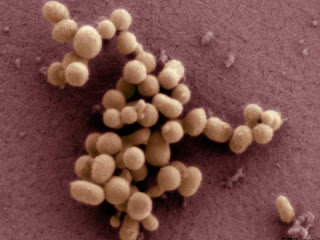The Synthetic Cell
In 2010 the James Craig Venter Institute in the US successfully created a synthetic cell. What this means is they made a genome for a cell synthetically and then injected that into a host cell, which then accepted this new DNA and continued to function and replicate as a normal cell would. This discovery could lead to improvements in many different industries around the world.
Despite sounding very simple in theory this process was actually very hard for James Venter and his team to complete. It took them 15 years in total to work through how to complete each step of the process before finally combining all of their knowledge to finally create the cell. The whole experiment is explained in length here http://www.sciencemag.org/content/329/5987/52.full. The cell that was used was no animal or anything complex like that, the cell they chose was yeast. This may seem a little odd as yeast isn’t particularly interesting but Venter’s team chose this cell due to its small genome size. After all this experiment was only a proof of concept and they were only trying to show that a synthetic cell could be made not what could be done with one.
Because of this amazing breakthrough many advancements will appear very soon in other fields. The James Craig Venter Institute has already stuck a deal with oil company Exxon Mobil to produce algae synthetically to create biofuels. This will have a huge impact upon the oil industry if there is an alternative energy source available. Another improvement that can result is a complete new process to administer vaccines. Instead of getting vaccines through a needle it could be possible to synthetically create the cells and put them inside of a pill that could be swallowed. This would make taking vaccinations much less invasive. But the institute isn’t too worried about these new advancements. They are now turning their attention to improving our understanding of what creates life inside of a cell. To do this they are going to determine which parts of DNA a cell can’t survive without and then from this they will know the absolute minimum requirements for life inside of a cell. This will change the field of genetics immensely as there is still a large amount that is unknown. This further research with the aid of synthetically altered cells could help scientists to understand exactly what each gene does inside of a cell.
This might all sound like something taken straight from a movie but I assure you this is real and is happening now. In the very near future many fields will be affected by the creation of this synthetic cell and we will be the ones who will be able to reap the rewards. This is only scratching the surface of what science will be capable of in coming years.
In 2010 the James Craig Venter Institute in the US successfully created a synthetic cell. What this means is they made a genome for a cell synthetically and then injected that into a host cell, which then accepted this new DNA and continued to function and replicate as a normal cell would. This discovery could lead to improvements in many different industries around the world.
Despite sounding very simple in theory this process was actually very hard for James Venter and his team to complete. It took them 15 years in total to work through how to complete each step of the process before finally combining all of their knowledge to finally create the cell. The whole experiment is explained in length here http://www.sciencemag.org/content/329/5987/52.full. The cell that was used was no animal or anything complex like that, the cell they chose was yeast. This may seem a little odd as yeast isn’t particularly interesting but Venter’s team chose this cell due to its small genome size. After all this experiment was only a proof of concept and they were only trying to show that a synthetic cell could be made not what could be done with one.
Because of this amazing breakthrough many advancements will appear very soon in other fields. The James Craig Venter Institute has already stuck a deal with oil company Exxon Mobil to produce algae synthetically to create biofuels. This will have a huge impact upon the oil industry if there is an alternative energy source available. Another improvement that can result is a complete new process to administer vaccines. Instead of getting vaccines through a needle it could be possible to synthetically create the cells and put them inside of a pill that could be swallowed. This would make taking vaccinations much less invasive. But the institute isn’t too worried about these new advancements. They are now turning their attention to improving our understanding of what creates life inside of a cell. To do this they are going to determine which parts of DNA a cell can’t survive without and then from this they will know the absolute minimum requirements for life inside of a cell. This will change the field of genetics immensely as there is still a large amount that is unknown. This further research with the aid of synthetically altered cells could help scientists to understand exactly what each gene does inside of a cell.
This might all sound like something taken straight from a movie but I assure you this is real and is happening now. In the very near future many fields will be affected by the creation of this synthetic cell and we will be the ones who will be able to reap the rewards. This is only scratching the surface of what science will be capable of in coming years.


No comments:
Post a Comment